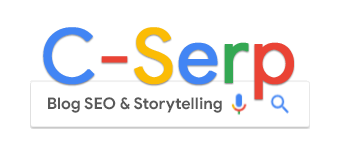FLUQs: Answer the hidden questions or vanish in AI search by Citation Labs


ChatGPT, Gemini, Perplexity: these are the new operating environments. Your content must be invokable inside them, or no one will see it.
At SMX Advanced, I broke down how to build an AI visibility engine: a system for making your net-new facts reusable by humans and agents across synthesis-first platforms.
It goes beyond publishing to show how teams can deploy structured content that survives LLM compression and shows up for buyers during their purchasing decisions.
It’s what we’re building with clients and inside XOFU, our LLM visibility GPT.
Here’s how it works.
Find the FLUQs (Friction-Inducing Latent Unasked Questions)
Friction-Inducing Latent Unasked Questions are the unasked questions your audience doesn’t know about. But if left unanswered, they can derail the entire buying process.
Costing you existing and future customers.
FLUQs live in the gap between what’s known and what’s required, often right where AI hallucinates or buyers hesitate.
That’s the zone we’re scanning now.

We explored this with a client that’s a prominent competitor in the online education space. They had the standard FAQs: tuition, payment plans, and eligibility.
But we hypothesized that there were numerous unknown unknowns that, when discovered, could negatively impact new students. We believed this would negatively impact existing and future enrollments.
Mid-career students going back to school weren’t asking:
- Who watches the kids while I study for the next 18 months?
- Who takes on extra shifts at work?
- How do I discuss schedule flexibility with my boss?
These aren’t theoretical questions. They’re real decision-blockers that don’t reveal themselves until later in the buying cycle or after the purchase.
And they’re invisible to traditional SEO.
There’s no search volume for “How do I renegotiate domestic labor before grad school?”
That doesn’t mean it’s irrelevant. It means the system doesn’t recognize it yet. You have to surface it.
These are the FLUQs. And by solving them, you give your audience foresight, build trust, and strengthen their buying decision.
That’s the yield.
You’re saving them cognitive, emotional, reputational, and time costs, particularly in last-minute crisis response. And you’re helping them succeed before the failure point shows up.
At least, this was our hypothesis before we ran the survey.
Where FLUQs hide (and how to extract them)
You go where the problems live.
Customer service logs, Reddit threads, support tickets, on-site reviews, even your existing FAQs, you dig anywhere friction shows up and gets repeated.
You also need to examine how AI responds to your ICP’s prompts:
- What’s being overgeneralized?
- Where are the hallucinations happening?
(This is difficult to do without a framework, which is what we’re building out with XOFU.)
You have to be hungry for the information gaps.
That’s your job now.

You aren’t optimizing content for keywords anymore. This ain’t Kansas. We’re in Milwaukee at a cheese curd museum, mad that we didn’t bring a tote bag to carry 5 pounds of samples.
You’re scanning for information your audience needs but doesn’t know they’re missing
If you’re not finding that, you’re not building visibility. You’re just hoping someone stumbles into your blog post before the LLM does.
And the chances of that happening are growing smaller every day.
There are four questions we ask to identify FLUQs:
- What’s not being asked by your ICP that directly impacts their success?
- Whose voice or stake is missing across reviews, forums, and existing content?
- Which prompts trigger the model to hallucinate or flatten nuance?
- What’s missing in the AI-cited resources that show up for your ICP’s bottom-funnel queries?
That last one’s big.
Often, you can pull citations from ChatGPT for your category right now. That becomes your link building list.
That’s where you knock.
Bring those publishers new facts and information.
Get cited.
Maybe you pay. Maybe you guest post.
Whatever it takes, you show up where your ICP’s prompts pull citations.
This is what link building looks like now. We’re beyond PageRank. We’re trying to gain visibility in the synthesis layer.
And if you’re not on the list, you ain’t in the conversation.
Prove FLUQs matter with facts (FRFYs)
Once you’ve spotted a FLUQ, your next move is to test it. Don’t just assume it’s real because it sounds plausible.
Turn it into a fact.
That’s where FRFYs come in: FLUQ Resolution Foresight Yield.

When you resolve a FLUQ, you’re filling a gap and giving your audience foresight. You’re sparing them cognitive, emotional, reputational, and temporal costs.
Especially during a last-minute crisis response.
You’re saving their butts in the future by giving them clarity now.
For our client in online education, we had a hypothesis: prospective students believe that getting admitted means their stakeholders (their partners, bosses, coworkers) will automatically support them. We didn’t know if that was true. So we tested it.
We surveyed 500 students.
We conducted one-on-one interviews with an additional 24 participants. And we found that students who pre-negotiated with their stakeholders had measurably better success rates.
Now we have a fact. A net-new fact.
This is a knowledge fragment that survives synthesis. Something a model can cite. Something a prospective student or AI assistant can reuse.
We’re way beyond the SEO approach of generating summaries and trying to rank. We have to mint new information that’s grounded in data.
That’s what makes it reusable (not just plausible).
Without that, you’re sharing obvious insights and guesses. LLMs may pull that, but they often won’t cite it. So your brand stays invisible.
Structure knowledge that survives AI compression
Now that you’ve got a net-new fact, the question is: how do you make it reusable?
You structure it with EchoBlocks.

You turn it into a fragment that survives compression, synthesis, and being yanked into a Gemini answer box without context. That means you stop thinking in paragraphs and start thinking in what we call EchoBlocks.
EchoBlocks are formats designed for reuse. They’re traceable. They’re concise. They carry causal logic. And they help you know whether the model actually used your information.
My favorite is the causal triplet. Subject, predicate, object.
For example:
- Subject: Mid-career students
- Predicate: Often disengage
- Object: Without pre-enrollment stakeholder negotiation
Then you wrap it in a known format: an FAQ, a checklist, a guide.

This needs to be something LLMs can parse and reuse. The goal is survivability, not elegance. That’s when it becomes usable – when it can show up inside someone else’s system.
Structure is what transforms facts into signals.
Without it, your facts vanish.
Where to publish so AI reuses your content
We think about three surface types: controlled, collaborative, and emergent:
- Controlled means you own it. Your glossary. Help docs. Product pages. Anywhere you can add a triplet, a checklist, or a causal chain. That’s where you emit. Structure matters.
- Collaborative is where you publish with someone else. Co-branded reports. Guest posts. Even Reddit or LinkedIn, if your ICP is there. You can still structure and EchoBlock it.
- Emergent is where it gets harder. It’s ChatGPT. Gemini. Perplexity. You’re showing up in somebody else’s system. These aren’t websites. These are operating environments. Agentic layers.
And your content (brand) has to survive synthesis.

That means your fragment – whatever it is – has to be callable. It has to make sense in someone else’s planner and query.
If your content can’t survive compression, it’s less likely to be reused or cited, and that’s where visibility disappears.
That’s why we EchoBlock and create triplets.
The focus is on getting your content reused in LLMs.

Note: Tracking reuse is challenging as tools and tech are new. But we’re building this out with XOFU. You can drop your URL into the tool and analyze your reuse.
Test if your content survives AI: 5 steps
Do this right now:
1. Find a high-traffic page.
Start with a page that already draws attention. This is your testing ground.
2. Scan for friction-inducing fact gaps.
Use the FLUQs-finder prompting sequence to locate missing but mission-critical facts:
Your proposed prompt structure is deeply practitioner-aware and already aligned with SL11.0 and SL07 protocol logic. Here’s a synthesis-driven refinement for role-coherence and FLUQ-sensitivity:
Refined prompts with emission-ready framing
Input type 1: Known materials
- Prompt:
“Given this [FAQ / page], and my ICP is <insert ICP>, what are the latent practitioner-relevant questions they are unlikely to know to ask — but that critically determine their ability to succeed with our solution? Can you group them by role, phase of use, or symbolic misunderstanding?”
Input type 2: Ambient signal
- Prompt:
“My ICP is <insert ICP>. Based on this customer review set / forum thread, what FLUQs are likely present? What misunderstandings, fears, or misaligned expectations are they carrying into their attempt to succeed — that our product must account for, even if never voiced?” - Optional add-on:
“Flag any FLUQs likely to generate symbolic drift, role misfires, or narrative friction if not resolved early.”
Sources include:
- Reviews and forum threads.
- Customer service logs.
- Sales and implementation team conversations.
3. Locate and answer one unasked but high-stakes question
Focus on what your ICP doesn’t know they need to ask, especially if it blocks success.
4. Format your answer as a causal triplet, FAQ, or checklist
These structures improve survivability and reuse inside LLM environments.
5. Publish and monitor what fragments get picked up
Watch for reuse in RAG pipelines, overview summaries, or agentic workflows.
The day Google quietly buried SEO
We were in Room B43, just off the main stage at Google I/O.
A small group of us – mostly long-time SEOs – had just watched the keynote where Google rolled out AI Mode (it’s “replacement” for AI Overviews). We were invited to a closed-door session with Danny Sullivan and a search engineer.
It was a weird moment. You could feel it. The tension. The panic behind the questions.
- “If I rank #1, why am I still showing up on page 2?”
- “What’s the point of optimizing if I just get synthesized into oblivion?”
- “Where are my 10 blue links?”
Nobody said that last one out loud, but it hung in the air.
Google’s answer?

Make non-commoditized content. Give us new data. Ground AI Mode in fact.
No mention of attribution. No guarantees of traffic. No way to know if your insights were even being used. Just… keep publishing. Hope for a citation. Expect nothing back.
That was the moment I knew the old playbook was done.
Synthesis is the new front page.
If your content can’t survive that layer, it’s invisible.
Appendix
1. Content Metabolic Efficiency Index (useful content theory)

About Garrett French
Garrett French is the founder of Citation Labs, a research and link-building agency trusted by Verizon, Adobe, and Angi. He also leads ZipSprout, a platform connecting national brands with local sponsorships, and XOFU, a new venture tracking brand visibility inside LLMs like ChatGPT.
His current focus is on helping businesses stay visible and useful within AI-generated answers, where buyers now start and shape their decisions.


